Xiamen Soft Matter Forum 2021 & ICAM-China 2021 Autumn Workshop
Dec. 9-13, 2021
Xiamen, China
About the Forum and Workshop
Soft Matter physics and related subjects are the research focus of physicists, chemists, biologists, material scientists, and engineers. Besides the classical soft matter systems such as polymers, liquid crystals, colloids, new functional materials such as biomimetic soft materials and composite materials, active matter, interfacial and bioelectronic systems are becoming the emerging research topics of soft matter.
ICAM-China(Institute for Complex Adaptive Matter- China)was established in January 2012, and has developed into a joint organization of 21 research institutions from physics, chemistry, biology to material science. ICAM-China aims to provide a platform for collaboration and exchanges in interdisciplinary research on sciences of matter, materials and life, and to continuously support and promote the development of international academic exchanges and educational activities in China.
Xiamen Soft Matter Forum is a yearly forum since 2016. In December 2021, Xiamen forum will be combined with ICAM-China 2021 Autumn Workshop (with focus on active matter and biomimetics) to provide a platform of multi-discipline researches on soft matter physics, focusing on several soft matter-related topics which have achieved great progresses in the past year. This conference aims to offer a world’s preeminent forum for reporting methodological and technological breakthroughs in the chosen areas, which could also empower the multidisciplinary collaborations among participants from all around the world.
Topics of the Forum
The forum will mainly cover the following subjects:
⚫ Interfacial phenomena
⚫ Soft matter mechanics
⚫ Bioelectronic systems
⚫ Machine learning in soft matter
ICAM-China Session:
⚫ Active matter
⚫ Biomimetics
Organizing Committee
Zhongcan Ouyang (oy@itp.ac.cn, Institute of Institute of Theoretical Physics, Chinese Academy of Sciences, China) -- Chair
Chenxu Wu (cxwu@xmu.edu.cn, Xiamen University) -- Co-Chair
Jianwei Shuai (jianweishuai@xmu.edu.cn, Xiamen University) -- Co-Chair
Leihan Tang (lhtang@hkbu.edu.hk, Hong Kong Baptist University) -- Co-Chair
Advisory Board(Aphabetical oder)
Weiqiu Chen, Zhejiang University
Haiping Fang, East China University Of Science and Technology
Wenbin Hu, Nanjing University
Jiping Huang, Fudan University
Liangbin Li, University of Science and Technology of China
Baohui Li, Nankai University
Ming Li, Institute of Physics, Chinese Academy of Sciences
Weihua Li, Fudan University
Zhongyuan Lv, Jilin University
Yuqiang Ma, Nanjing University
Yongfeng Men, Changchun Institute of Applied Chemistry, Chinese Academy of Sciences
Qi Ouyang, Peking University
Chen Song, Peking University
Zhaoyan Sun, Changchun Institute of Applied Chemistry, Chinese Academy of Sciences
Chao Tang, Peking University
Wei Wang, Nanjing University
Qihe Wei, Southern University of Science and Technology
Limei Xu, Peking University
Ning Xu, University of Science and Technology of China
Dadong Yan, Beijing Normal University
Litang Yan, Tsinghua University
Fangfu Ye, Institute of Theoretical Physics, Chinese Academy of Sciences
Junhua Yuan, University of Science and Technology of China
Haijun Zhou, Institute of Theoretical Physics, Chinese Academy of Sciences
List of Tentative Invited Speakers(Aphabetical oder)
Julien Berro,Yale University
Christopher Chen,Boston University
Jeff Z.Y. Chen,University of Waterloo
Jiangxing Chen,Hangzhou Dianzi University
Ke Chen,Institute of Physics, Chinese Academy of Sciences
Li Chen,Shaanxi Normal University
Qian Chen,University of Illinois at Urbana-Champaign
Kunpeng Cui,Hokkaido University
Linhong Deng,Changzhou University
Masao Doi,Beihang University
Eric Dufresne,ETH Zurich
Qihui Fan,Institute of Physics, Chinese Academy of Sciences
Yubo Fan,Beihang University
Xiqiao Feng,Tsinghua University
M. Gregory Forest,University of North Carolina
Xiongfei Fu,Shenzhen Institutes of Advanced Technology,Chinese Academy of Sciences
Yongxiang Gao,Shenzhen University
Ming Guo,Massachusetts Institute of Technology
Shuo Guo,ShanghaiTech University
Ximin He,University of California
Yan He,Tsinghua University
Zhonghuai Hou,University of Science and Technology of China
Hao Hu,Anhui University
Wenbin Hu,Nanjing University
Haiping Huang,Sun Yat-sen University
Xuhui Huang,Hong Kong University of Science and Technology
Zheng Jia,Zhejiang University
Wei Jiang,Changchun Institute of Applied Chemistry, Chinese Academy of Sciences
Guangyin Jing,Northwest University
Peter Jung,Ohio University
Yuekun Lai,Fuzhou University
Liqun Lei,Nanjing University
Baohui Li,Nankai University
Hui Li,Beijing Normal University
Ling Li,Virginia Tech
Ming Li,Institute of Physics, Chinese Academy of Sciences
Ming Li,University of Science and Technology of China
Weihua Li,Fudan University
Yunyun Li,Tongji University
Jiaping Lin,Southern University of Science and Technology
Chenli Liu,Shenzhen Institutes of Advanced Technology,Chinese Academy of Sciences
Fei Liu,Beihang University
Yanan Liu,Northwest University
Hartmut Löwen,Heinrich-Heine-Universität Düsseldorf
Erik Luijten,Northwestern
Zhongyuan Lv,Jilin University
Fanlong Meng,Institute of Theoretical Physics, Chinese Academy of Sciences
Holger Merlitz,IPF Dresden
Tadashi Nakano,Osaka University
Ran Ni,Nanyang Technological University
Nikolay Oskolkov,Lund University, Skåne University Hospital
Shuo Ouyang,Peking University
Zhongcan Ouyang,Institute of Theoretical Physics, Chinese Academy of Sciences
Yi Peng,Institute of Physics, Chinese Academy of Sciences
Weihe Qi,Southern University of Science and Technology
Markus Ralser,The Francis Crick Institute
Sten Rüdiger,Humboldt-Universität zu Berlin
Masaki Sano,Shanghai Jiao Tong University
Pablo Sartori,Gulbenkian Science Institute
An-Chang Shi,McMaster University
Rui Shi,Zhejiang University
Xiaqing Shi,Suzhou University
Yaogen Shu,Wenzhou Institute, University of Chinese Academy of Science
Jens-Uwe Sommer,Leibniz Institute for polymer research Dresden
Yujun Song,Nanjing University
Yunxiang Sun,Ningbo University
Zhaoyan Sun,Changchun Institute of Applied Chemistry, Chinese Academy of Sciences
Peng Tan,Fudan University
Leihan Tang,Hong Kong Baptist University
Fabian J Theis,Helmholtz Center Munich
Wende Tian,Suzhou University
Zhanchun Tu,Beijing Normal University
Remco Tuinier,Eindhoven University of Technology
Jacon Ulmschneider,Shanghai Jiaotong University
Renko de Vries,Wagningen University & Research
Qi Wang,University of South Carolina
Wei Wang,Harbin Institute of Technology
Xudong Wang,University of Wisconsin-Madison
David Weitz,Harvard University
Mathias Wilhelm,Technical University of Munich
Yilin Wu,The Chinese University of Hong Kong
Ning Xu,University of Science and Technology of China
Xinliang Xu,Beijing Computational Science Research Center
Xinpeng Xu,Guangdong Technion-Israel Institute of Technology
Dadong Yan,Beijing Normal University
Litang Yan,Tsinghua University
Xuehai Yan,Institute of Process Engineering, Chinese Academy of Sciences
Huaiyu Yang,Loughborough University
Mingcheng Yang,Institute of Physics, Chinese Academy of Sciences
Fangfu Ye,Institute of Physics, Chinese Academy of Sciences
Junhua Yuan,University of Science and Technology of China
Nir Yosef,University of California, Berkeley
Wei Yu,Shanghai Jiao Tong University
Hepeng Zhang,Shanghai Jiao Tong University
Linfeng Zhang,Beijing Shenshi Technology Co., Ltd
Mingjie Zhang,Southern University of Science and Technology
Pan Zhang,Institute of Theoretical Physics, Chinese Academy of Sciences
Yaopeng Zhang,Donghua University
Yongfeng Zhao,Suzhou University
Ning Zheng,Beijing Institute of Technology
Haijun Zhou,Institute of Theoretical Physics, Chinese Academy of Sciences
Xin Zhou,University of Science and Technology of China
Han Zuilhof,Wagningen University & Research
David Zwicker,Max Planck Institute for Dynamics and Self-Organization
Secretariate
Hu Chen (chenhu@xmu.edu.cn)- Secretary-General
Youhui Lin (linyouhui@xmu.edu.cn) Co-Secretary-General
Rui Ma (ruima@xmu.edu.cn) Co-Secretary-General
Wenxi Guo (wxguo@xmu.edu.cn) Co-Secretary-General
Yun Yang (yangyun@xmu.edu.cn)
Hao Wang (h_wang@xmu.edu.cn)
Talk and Poster Presentation
There will be a number of keynote/invited presentations (by invitation), and submitted oral talk and poster presentations. The submission will be open from September 1 st to November 15th, 2021.
Please refer to the following website for details of submission:
https://rwz.xmu.edu.cn/smnep2021/index.htm
About the Conference Venue and Hotel:
The meeting will be hold in Royal Victoria Hotel. It is located in the scenic Huandao Road and connected with the longest Huangcuo beach bathing place which is known as the "Golden Beach" of Xiamen, away from the hustle and bustle of the city. It is built according to the platinum five-star hotel standards, overlooking the sea with a strong Spanish architectural style and subtropical gardening landscape for business and resort.
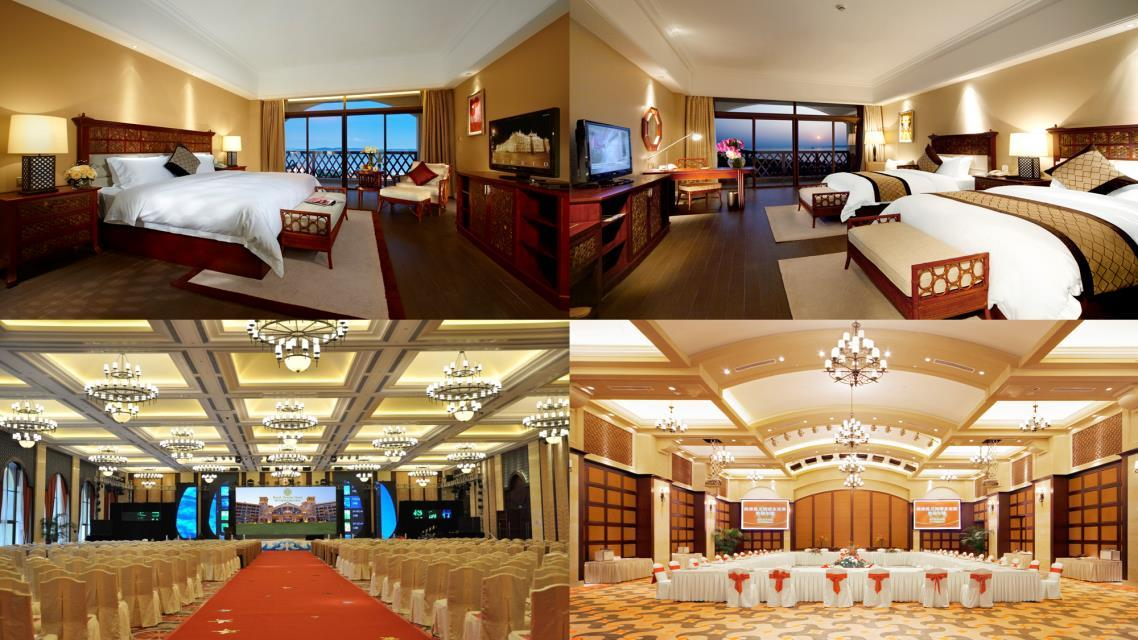

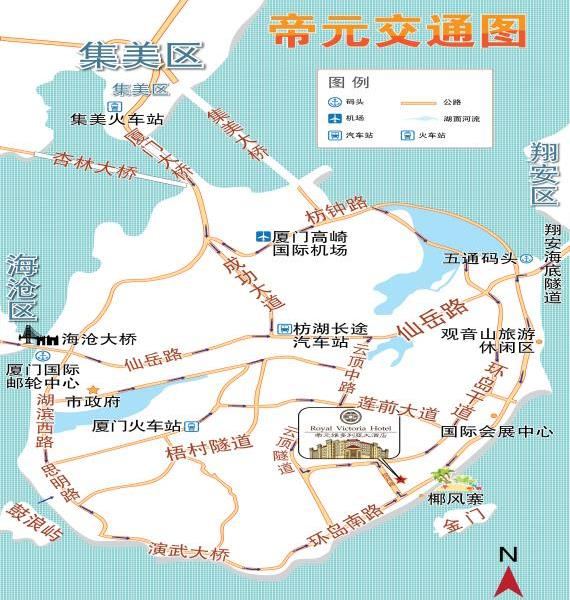
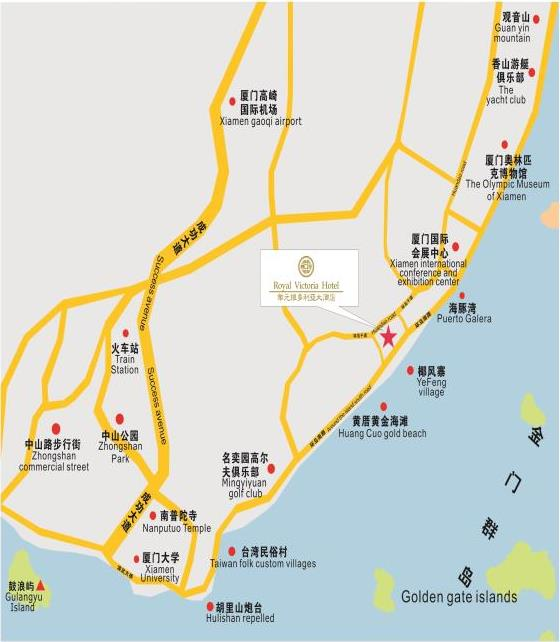
Xiamen--A modern port and tourism city located in the southeast part of China, city above the sea, sea in the city, therefore, Xiamen is known as the Garden on the Sea, it’s also the important MICE city of China which has won the “Top 10 Conference& Exhibition City of China”, “Top 10 Charming Conference Destination City” and other honorary titles, it’s one of the five economical special zones. It has won the “UN Habitat Award”, “International Garden City”, “International Landscape City”, “National Sanitary City”, “Environmental Protection Model City”, “National Civilized City”, “National Excellent Tourism City” etc.
Rich in tourism resources, Xiamen has various sightseeing attractions, places of historic interest, and tourist resorts, such as Gulang Islet, Wulao Mountain and NanputuoTemple, Ten Thousand Rock Botanical Garden, Bailuzhou Recreation Center, hot springs resorts, Jimei scenic spots and other ecological environmental tours outside the island.
As the organizing committee chair, I cordially invite all of you to attend and enjoy this conference, and your participation will make the conference more valuable and successful. I look forward to seeing you at beautiful Xiamen in November, 2021.
About Xiamen University
As one of the top-ranking universities in China and directly affiliated with the Education Ministry, Xiamen University (XMU) is located in the coastal city Xiamen, Fujian Province. It was founded in 1921 by Tan KahKee, a well-known overseas Chinese businessman and philanthropist, making XMU the first one in China founded by an overseas Chinese. Since its founding, the university has educated over 150,000 undergraduates and postgraduates.
XMU offers many programs in humanities, social sciences, natural sciences, engineering and technology, management, arts education, medical science and others, conferring a full range of bachelor's, master's and doctoral degrees. The university currently contains 26 schools, 66 departments and 9 research institutes with a total enrolment of about 40,000 full-time students, including 20,454 undergraduates, 16,546 master’s students, and 2,797 doctoral students. At present, there are over 2500 students from Hong Kong, Macao and Taiwan and from other parts of the world, and it has over 2,500 full-time faculty and professional researchers, including 11 academicians of the Chinese Academy of Sciences and 12 adjunct academicians. The university now offers 83 undergraduate programs, 279 master programs, 185 Ph.D. programs, and 15 post-doctoral research centers established in different fields. Five subjects have been accredited and awarded as "the national key broad disciplines", 9 subjects have been accredited and awarded as "the national key sub-disciplines", and 9 "national educational centers for talents" have been approved. Currently XMU is also the home of more than 150 research organizations in various fields, among which are: 5 state key laboratories; 1 state engineering laboratory; 1 state engineering & technology research centre; 5 ministry-level key laboratories; 3 ministry-level engineering & technology research centers; and 5 ministry-level key research bases for the liberal arts.
Furthermore, it has established inter-university cooperative ties with over 250 institutions of higher education worldwide such as UK, USA, Japan, France, Russia, and the regions of Hong Kong, Macao, and Taiwan. The university is situated amidst picturesque scenery, with its campus stretching along the seashore at the foot of mountains, a desirable environment for learning via well-equipped with first-class campus network and libraries.
Xiamen University is regarded as one of the most beautiful universities in China.
More information concerning XMU, refer to www.xmu.edu.cn
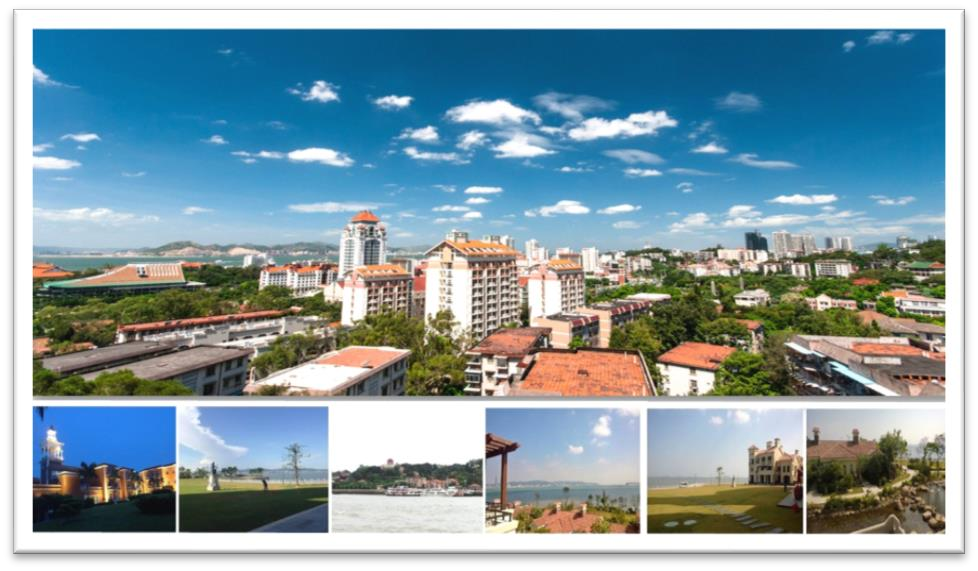
Xiamen University and Xiamen City
The Department of Physics at Xiamen University was founded in 1924, and has enjoyed its longtime history ever since. It served as a member of five-university semiconductor consortium in 1950s, stood as a key department for nationwide “211” and “985” projects. It is organized into six sub-leveled topical areas: theoretical physics, condensed matter physics, biophysics and soft-condensed matters, optics, astrophysics and cosmology, as well as radio physics. In the past nine decades, upholding principles of conducting solid work and striving for excellence, the department has steadfastly aimed at goals of cultivating capable and creative world-class scholars.
During recent four years, the department has actively recruited renowned scholars, developed advanced education and research platforms, helped promote the economy in local areas, and built leading-role groups in areas of condensed matters, soft matters, and astrophysics. Among them, the groups in soft matter, grapheme and astrophysics have published three papers in Nature series (the coauthored paper published in Nature was ranked as one of 10main scientific breakthroughs in China in 2015). The study of mimicking Faraday rotation to sort orbital angular momentum of light was selected as one of the China’s Most Prominent Break throughs in Optics in 2014.
The Research Institute for Biomimetics and Soft Matter (BioSmat) established by the department of physics is referred as a Ministry of Education 111 Intelligence-Recruitment Scheme, a provincial key laboratory, and one of national research centers that are equipped by the state-of-art facilities, house most densely-populated soft-matter excellent scholars. As the first joining member of ICAM, it takes the leading role in compiling and editing the soft and condensed matter physics in “Strategies of Science Developments in China”. It has been chairing the soft-matter session of CPS Fall Meeting for many years. It acts as the compiler of soft matter physics terminology in Chinese Encyclopedia, and the principal editor and advisor for soft matter physics book series.
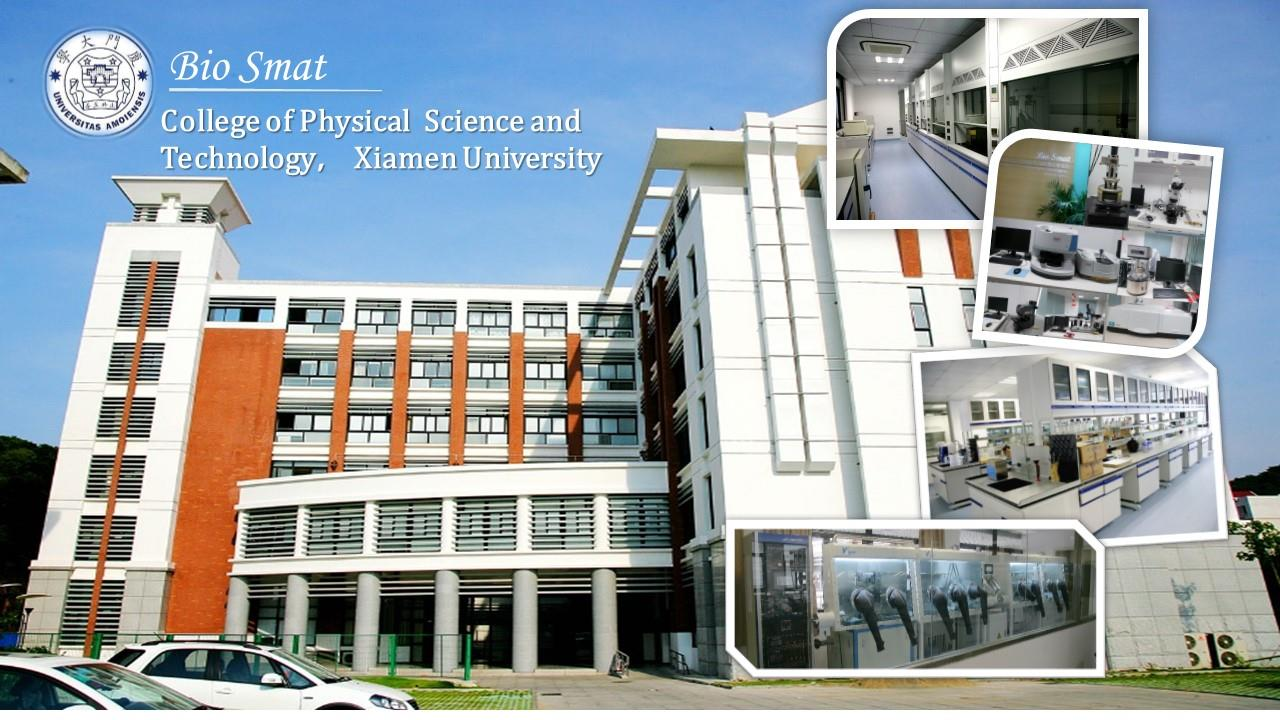
More campus views: http://www.xmu.edu.cn/xyfg.asp
3D campus map: http://map.xmu.edu.cn/gcampus/index.html
The BioSmat webpage: http://rwz.xmu.edu.cn/
